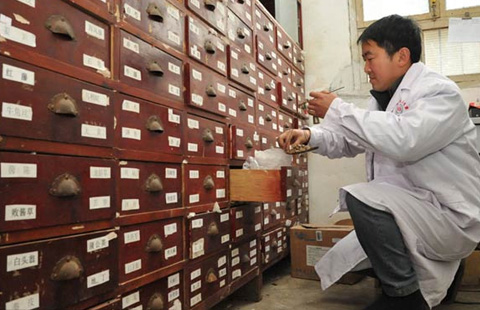China's weak foreign trade growth suggests more policy easing
(Xinhua) Updated: 2015-01-13 11:15For 2015, economists believe that the foreign trade growth will continue the downward trend.
Bob Liu predicted that both export and import growth will fall in January, but export growth should still be much stronger than imports. The trade surplus is expected to remain high in January, before experiencing a seasonal decline in February and March.
His point was echoed by a research note from Merrill Lynch, forecasting that the elevated trade surplus could be sustained for several months on falling crude oil prices, while export growth could soften on a strong RMB.
Related:
Subdued price levels point to more policy easing
China's consumer inflation remained weak in December while price declines at the factory gate level continued to deepen, suggesting weakness in the world's second-largest economy but will create space for policy makers to take easing measures.
Growth in the consumer price index (CPI), the main gauge of inflation, rebounded to 1.5 percent in December from November's 1.4 percent, its slowest increase since November 2009, the National Bureau of Statistics (NBS) said Friday.
On a monthly basis, December's CPI edged up 0.3 percent against the previous month, reversing the downward trend experienced since September.
This small pick-up in December's consumer inflation was mostly driven by food prices, said Chang Jian, Barclays chief China economist.
Food prices, which account for about one-third of the CPI calculation's weighting, rose 2.9 percent from a year ago in December, compared to 2.3 percent the previous month.
Growth in non-food prices, however, fell to a 56-month low of 0.8 percent, led by falling transportation and housing costs, Chang said.
China's consumer prices grew 2 percent in 2014 from one year earlier, well below the government's 3.5 percent target set for the year. It was also below the 2.6 percent growth registered in 2013.
Producer price index (PPI) slumped 3.3 percent in December from one year earlier, the sharpest fall in more than two years, and the decline deepened from November's 2.7 percent fall.
Tumbling oil and other commodity prices have extended the run of producer-price declines to a record 34 months.
PPI fell 1.9 percent year on year in 2014.
- 'Emerging' push lights up prospects
- Penny stocks glitter as bigger peers lose luster
- Stock market to see three-year bull run
- Aston Martin China names new president
- Local State firms face credit risk
- Mobile Internet shakes up taxi industry and more
- Shengjing Global Innovation Awards 2015 launches in Beijing
- Refineries face brunt of tax rise
















